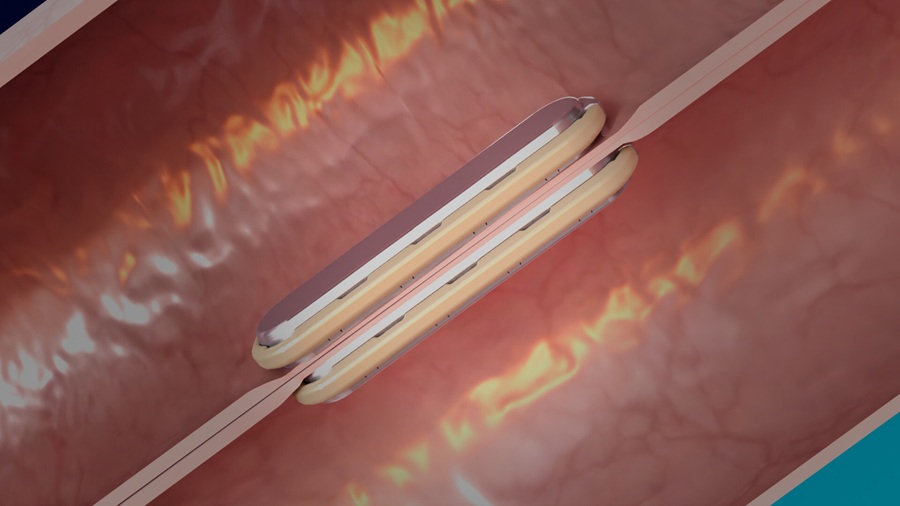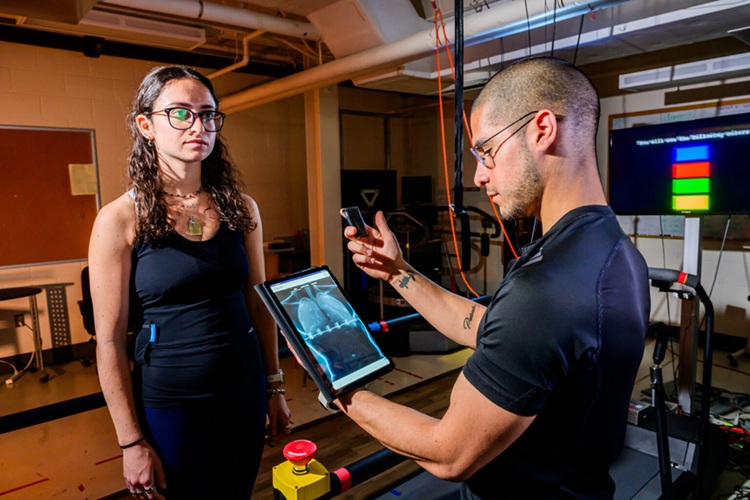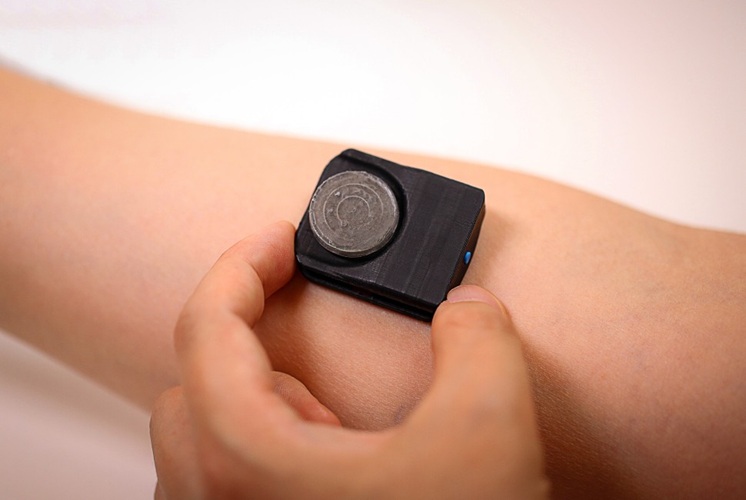Minimally Invasive Surgical Technique Creates Anastomosis Without Leaving Foreign Materials Behind
|
By HospiMedica International staff writers Posted on 25 Dec 2024 |

Creating a secure anastomosis that is free of complications such as bleeding or leaks is a key goal in minimally invasive bariatric, metabolic, and digestive surgery. Traditional anastomotic methods, such as staples or sutures, can be challenging to apply in confined surgical spaces and may cause trauma by cutting or piercing the bowel tissue, leaving foreign materials behind. Now, an innovative minimally invasive surgical technique can create anastomosis without leaving any foreign material in the body. The technique, known as magnetic compression anastomosis, is designed to mitigate the need for incision to the bowel, reduce user technical variability during a procedure, and be naturally excreted from the body. The anastomosis created with magnet compressions happens without the cutting or piercing of intestinal tissue that occurs with the current practice of stapling or suturing.
GT Metabolic Solutions (St Michael, MN, USA) has engineered a magnetic compression solution called delayed anastomosis technology (DAT) that surgeons can use to create consistent anastomosis while helping minimize potential complications, such as leaks and bleeds, in challenging applications. The company’s MagDI System comprises the GT Metabolic linear DI magnets, the GT Metabolic delivery system, and the GT Metabolic laparoscopic positioning device (LPD). During the procedure, two linear magnets are delivered orogastrically into the patient. The magnets are positioned laparoscopically and naturally self-align through the small bowel. After a few weeks, the magnets compress the tissue, fusing it together to form an anastomosis. The magnets then detach and are excreted naturally.
The MagDI System is designed to ensure more consistent tissue alignment, promote central necrosis, and facilitate circumferential healing, all while avoiding foreign materials that could impede natural tissue healing. The system has received clearance from the U.S. Food and Drug Administration (FDA) for side-to-side duodeno-ileal (DI) anastomosis. Clinical data submitted to the FDA showed that the system performed as intended. In all clinical cases, the MagDI System successfully created a patent side-to-side duodeno-ileal anastomosis without reports of bleeding, leakage, or obstruction.
"It's a paradigm shift creating a new standard of care that democratizes anastomosis creation," said inventor Michel Gagner, MD, FRCSC, FACS, and chief medical officer and co-founder of GT Metabolic. "We're providing the surgical community with a novel approach to minimally invasive surgery shown to have zero bleeds and zero leaks. Suturing and stapling bowel tissue for anastomosis creation will become outdated. Magnetic compression anastomosis technology will revolutionize the industry."
Related Links:
GT Metabolic Solutions
Latest Surgical Techniques News
- Intravascular Imaging for Guiding Stent Implantation Ensures Safer Stenting Procedures
- World's First AI Surgical Guidance Platform Allows Surgeons to Measure Success in Real-Time
- AI-Generated Synthetic Scarred Hearts Aid Atrial Fibrillation Treatment
- New Class of Bioadhesives to Connect Human Tissues to Long-Term Medical Implants
- New Transcatheter Valve Found Safe and Effective for Treating Aortic Regurgitation
- Minimally Invasive Valve Repair Reduces Hospitalizations in Severe Tricuspid Regurgitation Patients
- Tiny Robotic Tools Powered by Magnetic Fields to Enable Minimally Invasive Brain Surgery
- Magnetic Tweezers Make Robotic Surgery Safer and More Precise
- AI-Powered Surgical Planning Tool Improves Pre-Op Planning
- Novel Sensing System Restores Missing Sense of Touch in Minimally Invasive Surgery
- Headset-Based AR Navigation System Improves EVD Placement
- Higher Electrode Density Improves Epilepsy Surgery by Pinpointing Where Seizures Begin
- Open-Source Tool Optimizes Placement of Visual Brain Implants
- Easy-To-Apply Gel Could Prevent Formation of Post-Surgical Abdominal Adhesions
- Groundbreaking Leadless Pacemaker to Prevent Invasive Surgeries for Children
- Spectroscopy Technique Improves Surgery for Pediatric Epilepsy Patients
Channels
Critical Care
view channel
Novel Intrabronchial Method Delivers Cell Therapies in Critically Ill Patients on External Lung Support
Until now, administering cell therapies to patients on extracorporeal membrane oxygenation (ECMO)—a life-support system typically used for severe lung failure—has been nearly impossible.... Read more
Generative AI Technology Detects Heart Disease Earlier Than Conventional Methods
Detecting heart dysfunction early using cost-effective and widely accessible tools like electrocardiograms (ECGs) and efficiently directing the right patients for more expensive imaging tests remains a... Read more
Wearable Technology Predicts Cardiovascular Risk by Continuously Monitoring Heart Rate Recovery
The heart's response to physical activity is a vital early indicator of changes in health, particularly in cardiovascular function and mortality. Extensive research has demonstrated a connection between... Read more
Wearable Health Monitoring Device Measures Gases Emitted from and Absorbed by Skin
The skin plays a vital role in protecting our body from external elements. A key component of this protective function is the skin barrier, which consists of tightly woven proteins and fats that help retain... Read morePatient Care
view channel
Portable Biosensor Platform to Reduce Hospital-Acquired Infections
Approximately 4 million patients in the European Union acquire healthcare-associated infections (HAIs) or nosocomial infections each year, with around 37,000 deaths directly resulting from these infections,... Read moreFirst-Of-Its-Kind Portable Germicidal Light Technology Disinfects High-Touch Clinical Surfaces in Seconds
Reducing healthcare-acquired infections (HAIs) remains a pressing issue within global healthcare systems. In the United States alone, 1.7 million patients contract HAIs annually, leading to approximately... Read more
Surgical Capacity Optimization Solution Helps Hospitals Boost OR Utilization
An innovative solution has the capability to transform surgical capacity utilization by targeting the root cause of surgical block time inefficiencies. Fujitsu Limited’s (Tokyo, Japan) Surgical Capacity... Read more
Game-Changing Innovation in Surgical Instrument Sterilization Significantly Improves OR Throughput
A groundbreaking innovation enables hospitals to significantly improve instrument processing time and throughput in operating rooms (ORs) and sterile processing departments. Turbett Surgical, Inc.... Read moreHealth IT
view channel
Printable Molecule-Selective Nanoparticles Enable Mass Production of Wearable Biosensors
The future of medicine is likely to focus on the personalization of healthcare—understanding exactly what an individual requires and delivering the appropriate combination of nutrients, metabolites, and... Read more
Smartwatches Could Detect Congestive Heart Failure
Diagnosing congestive heart failure (CHF) typically requires expensive and time-consuming imaging techniques like echocardiography, also known as cardiac ultrasound. Previously, detecting CHF by analyzing... Read moreBusiness
view channel
Expanded Collaboration to Transform OR Technology Through AI and Automation
The expansion of an existing collaboration between three leading companies aims to develop artificial intelligence (AI)-driven solutions for smart operating rooms with sophisticated monitoring and automation.... Read more















